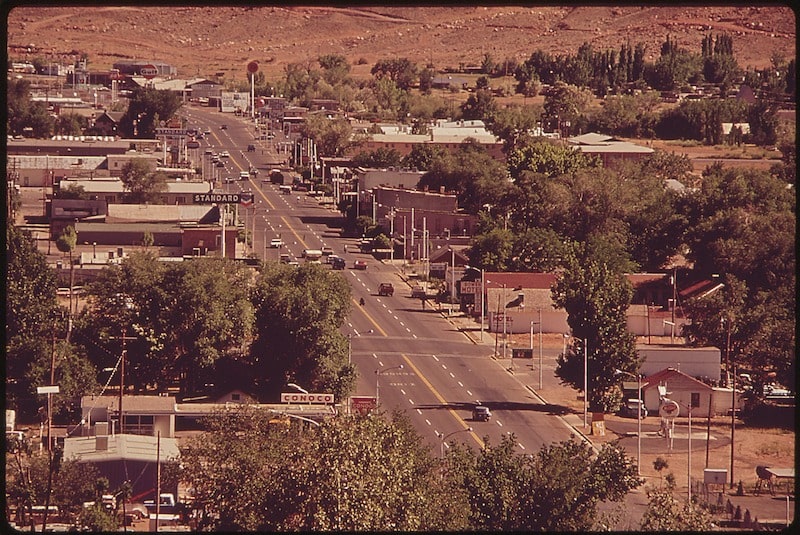
Barreling south on Highway 191, following the Old Spanish Trail, drivers cross the Colorado River to arrive in Moab, a town made up almost entirely of hotels and tourist traps, T-shirt shops, and eclectic cafes, all surrounded by stunning natural beauty.
In the days of horse-drawn carriages, there was a precipitous 25-foot drop that required skillful maneuvering to gain access to the outpost known as Moab, a name of Biblical origin, now known the world over for its boundless recreational opportunities.
The buzz of traffic down Main Street picks up as the colors of the cottonwoods peak, making Moab a prime fall tourist destination. The history of this sole street cutting through town from north to south remains an ever-changing landscape of gift stores, coffee shops, and gas stations. Each building and business has a history of multiple owners and names, leading to rich storylines from the past, present and future of Moab’s Main Street, from ghosts, to fires and floods.
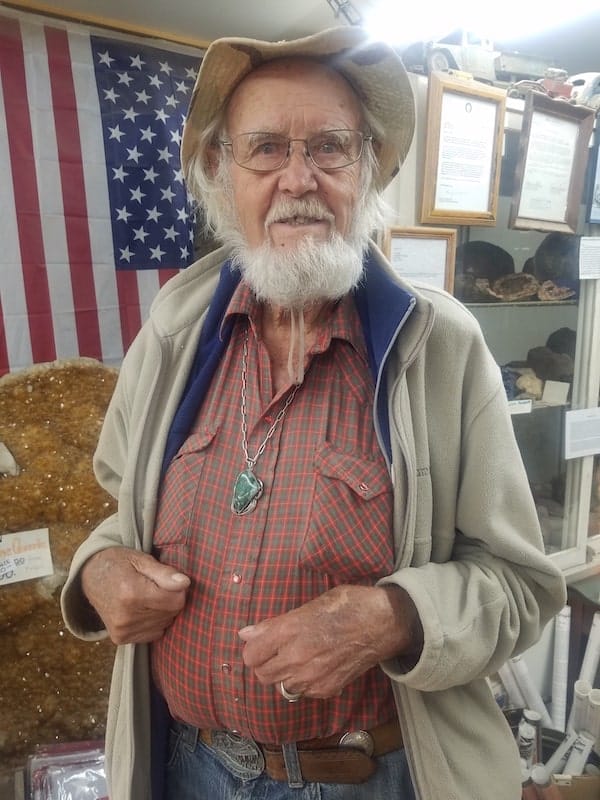
Arriving from Salt Lake, one passes by Lin Ottinger’s rock shop, a store that is as enduring as the fossils and gems on display inside. Not much has changed in this establishment since its opening in 1960, and tourists can find remains of dinosaurs that used to roam this land. At the other end of town, the future of rocks and gems can be found, where a new “trading post” has set up shop in the former Gear Heads building.
Another “gem store” leads to a few ghost stories. Nestled between the historic Lomay Building which was built in 1899, Sage and Stone now resides, and alongside a local wellness studio and Miguel’s Baja Grill, lies a seemingly abandoned gift store.
“A steadfast homie,” the store’s owner refuses to cave in to tourism in Moab and maintains the building just enough for it not to be condemned.
Rays of sunlight catch prisms that have been on the walls for more than two decades, and outdated tags show prices frozen in time. There is a worn piece of paper from the William’s Drug Company dated 1902. The owner of Sage and Stone reports suspicious activity unresolved by logical explanations, and corroborated by the previous residents of the building.
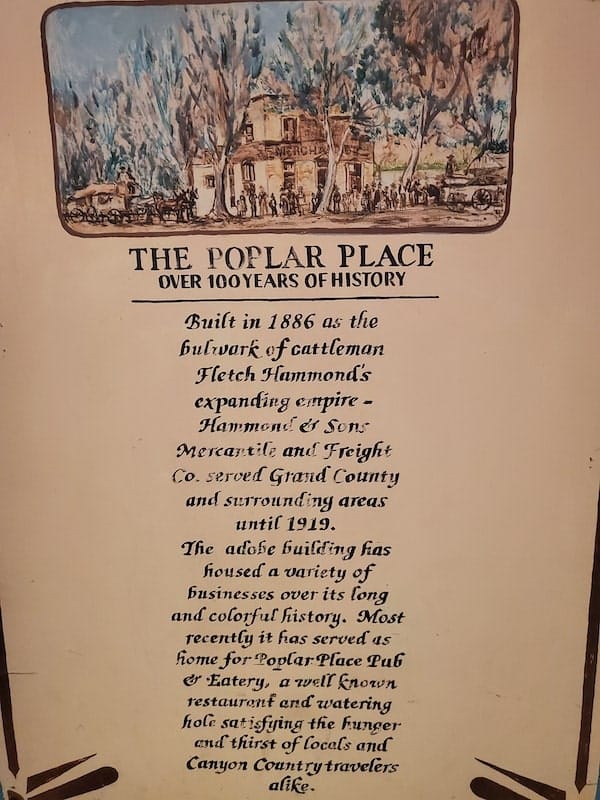
Moab houses many “Phoenix burning in the ashes” stories. Poplar Place, formerly La Sal house and now Trailhead, is a relic of an adobe-style building that was built in 1886 and burned in 1989.
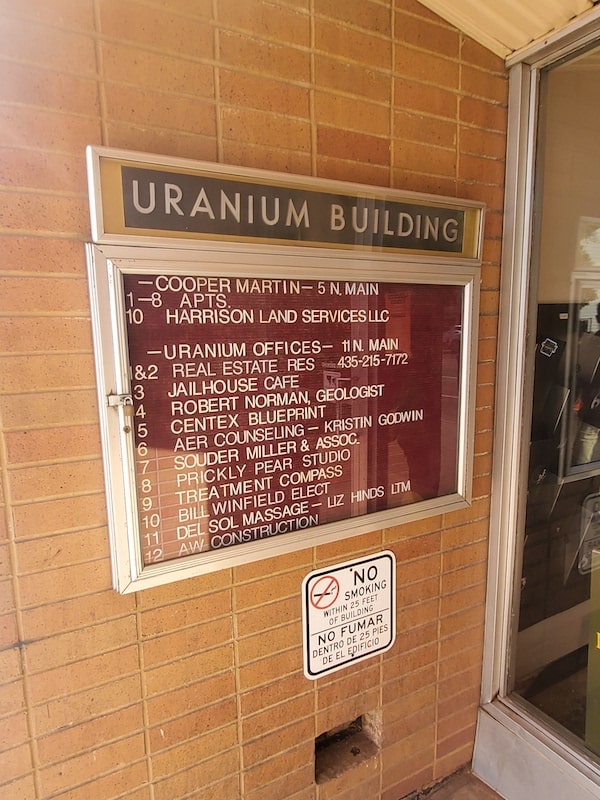
A prominent building now towered over by a hotel has seen a revolving door of uses, from a general mercantile to a Maytag dealership to a brothel during Moab’s Uranium era. Many buildings reflect the economics of the town. In 1950, the Uranium boom struck and mainstreet became a truck route for transporting the radioactive ore. Jewelry containing uranium was even sold at the Moki Trading Post. Today, The Uranium Building houses construction offices, political offices and massage rooms.
On a breezy, warm fall afternoon, I head to the Moab Garage Co. for coffee and a cookie. This staple sandwich shop is a relic of the golden days when the Garage Company was an actual garage that serviced autos and boats. It eventually became a Sears. The current owners kept the name to preserve its history while maintaining their lust for creative entrepreneurship.
Outside, next to lines of parked cars and bike racks, a poet sits by a fold-out table offering to write a poem for passing tourists for “whatever you think it is worth.” He reads the poem and I lean in, not only for the magic of his words, and also because it’s hard to hear him over the semi’s rolling to a stop. Cars pull in, cars pull out; a coordinated dance of distractions.
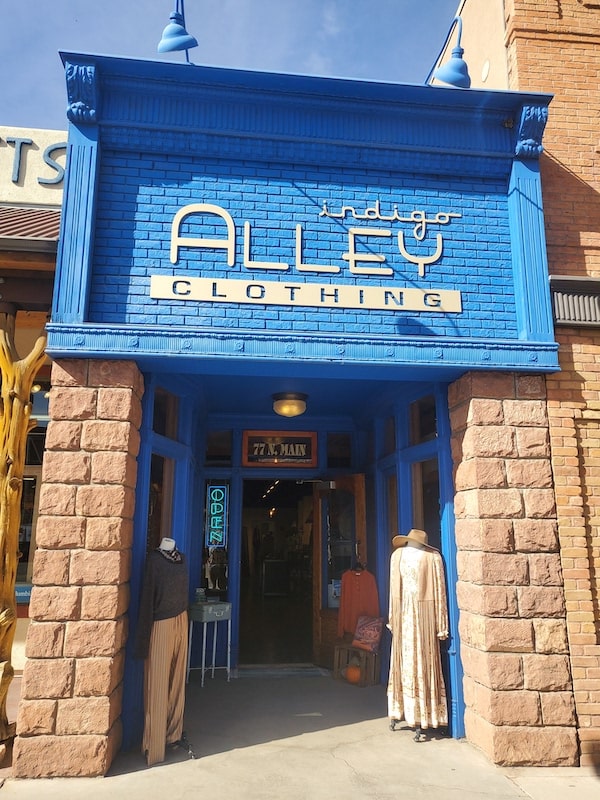
Indigo Alley, a clothing store started by Faye Hutchins to give the people of Moab a place to shop, is actually a converted alleyway where the police used to hang out to catch cars whizzing by too fast.
Next door at the Desert Wild, the old store windows remain the same as the millinery which occupied it in the early 1900s. Moab Made, which features artists from around the area, used to be the Barkery, a pet supply store. This beautiful building also has a basement which floods every year during monsoon season.
Many structures have undergone either major facelifts or minor cosmetic surgery. McStiff’s Plaza, featuring Dewey’s restaurant, pays homage to the original passage over the Colorado River about 27 miles upstream.
Relics of the past are kept alive. Gear Trader’s houses the original vault to the Zion’s bank that once occupied the building. Next door, Walker Drug stands frozen in time, with strictly cosmetic changes to give it a new sheen. The Wells Fargo building is one of the town’s oldest buildings that was once occupied by the Times Independent Newspaper.
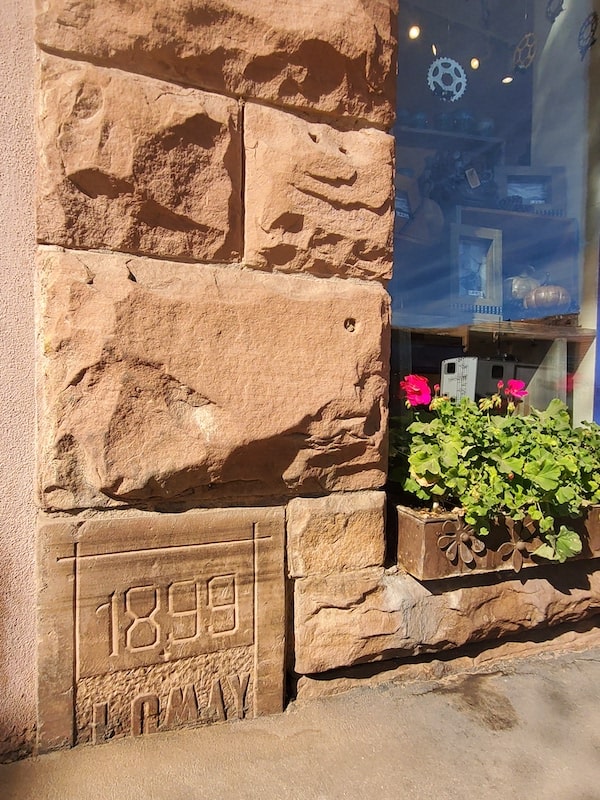
The diverse history of Moab’s Main Street is a never-ending story of transformation. As the seasons change from year to year, Moab does too, growing and adapting to the demands of time and tourists.
RELATED STORIES
Helping Ghosts Move On in Moab, Utah
Back in Time with Historic Apache Motel in Moab, Utah
Moab’s Canyon & Waffle House: The Last Coffee-Counter in Moab, Utah
John W. Williams: Moab’s Wild West Doctor
Moab Utah: The Man Who Quit Money
SUPPORT LOCAL JOURNALISM AND SUBSCRIBE TO PRINT MAGAZINE
Subscribe to Utah Stories weekly newsletter and get our stories directly to your inbox






